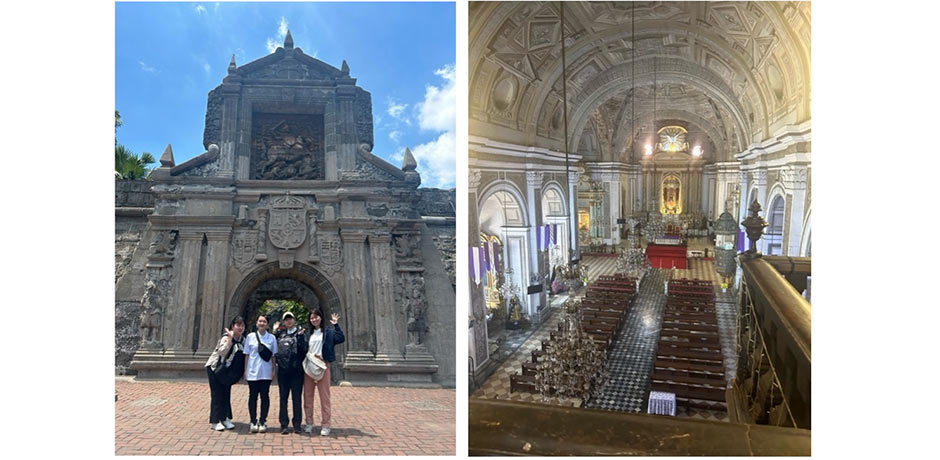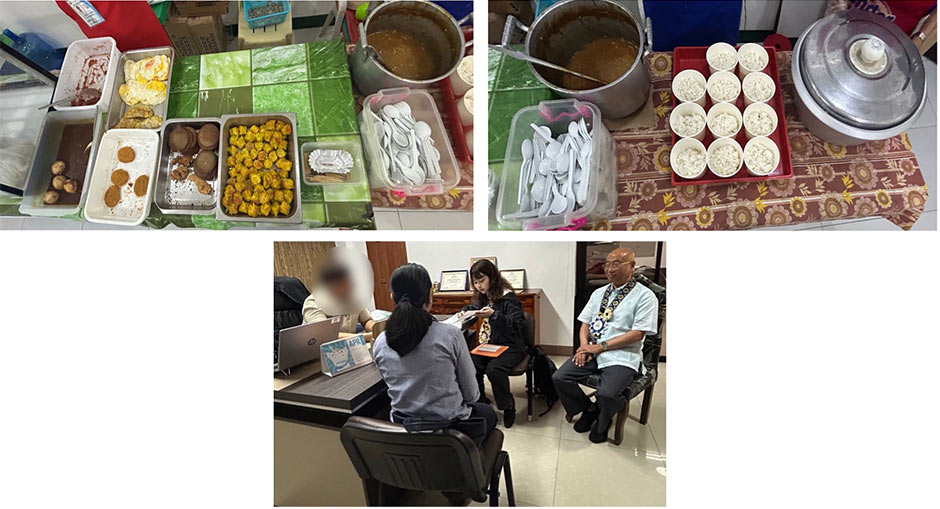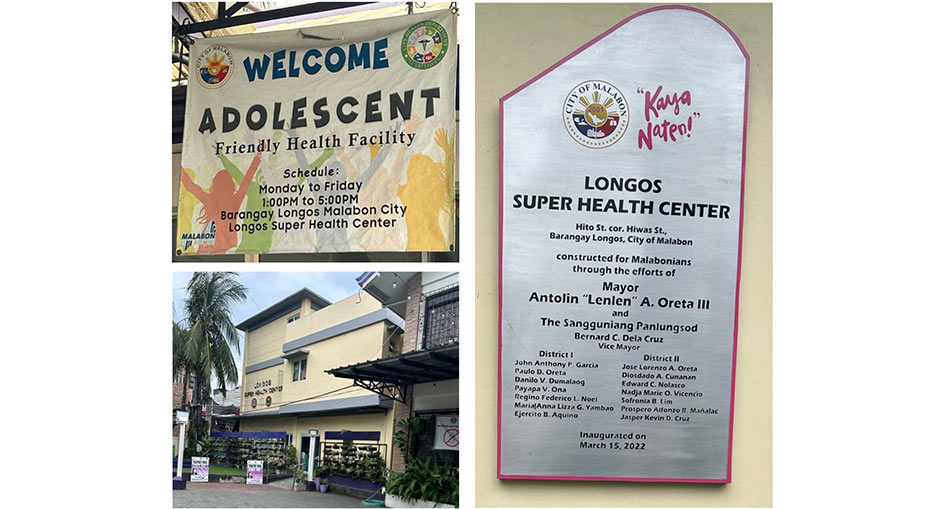From 23 to 29 March 2025, we visited Manila, Philippines. In the Philippines, we accompanied third-year students in the Laboratory of Global Health to conduct research on ‘young carers’ and ‘school meals’, which are the themes of their graduation theses, and also visited various health facilities and the University of the Philippines. During our seven-day stay, we visited the Child Protection Unit (CPU) of the University of the Philippines’ Hospital, the Department of Labour and Employment (DOLE) of the Philippine Government, the University of the Philippines School of Medicine, and the University of the Philippines School of Public Health. (DOLE), San Agustin Church, Fort Santiago, Ninoy Aquino Elementary School, Malabon City LONGOS Super Health Centre.
University of the Philippines College of Medicine Hospital CPU* is a facility that protects children from abuse and provides them with the treatment and care they need, with discreet entrances and exits. At the CPU, a doctor and a nurse told us about seven to ten new patients a day and, together with traditional patients. They told us that about 30 people visit the facility per day. We also learnt about the current situation of sexual abuse in the case of girls and physical abuse in the case of boys. The use of dolls to help children who have difficulty speaking due to these forms of abuse, the use of online counselling, the use of a room with nothing around the computer to protect privacy, and the use of professionally painted pictures on the walls of the room to help the children stay calm, are just a few examples. There were also beautiful pictures on the walls of the room drawn by experts to help the children feel calm.
(*Child protection refers to all initiatives and mechanisms to protect children from all forms of abuse, exploitation and violence. The Philippines is the only country in Asia where this mechanism is organised at the national level, and the University of the Philippines CPU is its core organisation, which also provides training to the various institutions).


At DOLE, the students were able to learn about the laws regarding child labour in the Philippines and how the mutual help system within the family, which comes from the Filipino culture, can sometimes lead to heavy workloads for the children. We were able to strongly recognise that no matter what the law says about working hours, especially if the family runs a shop or has a little brother or sister, there is a social custom of helping out, which can lead to a heavy workload without realising it, an issue that is common to many countries. .

At San Agustin Church and Fort Santiago, we learnt about the trajectory of the Philippines since the end of the war. In particular, it was very disappointing and sad to learn about the massacres, forced labour and sexual assaults committed by the Japanese military against the Filipino military and local residents. I realised that cruel events like the wartime and post-war photos of Okinawa in the Peace Memorial Park in Itoman were also taking place in the Philippines across the sea, and at the same time I felt horrified that I was unaware of such events.

At Ninoy Aquino Elementary School, we accompanied the students on a tour of the school lunch service. Pupils from poor families were provided with free school lunches, while other pupils took what they wanted to eat and paid for what they took. When we asked the students about their favourite school lunch menu, they gave chicken, fried eggs and scrambled eggs because they were rich in protein and tasty. On the way back to the hotel from the school, we were also given the opportunity to view the Tondo neighbourhood, one of the poorest areas in Manila, from the car. It was very densely populated with houses, small houses adjacent to power lines, and some people making a living by sorting rubbish and selling it for recycling *. Seeing the disparity in society, we were able to strongly recognise it as a real problem. From now on, I would like to learn about the support they need and cooperate with them towards a solution.
(*The City of Manila is redeveloping the Tondo area, which was considered the largest slum in the East, and most of the rubbish heaps such as Smokey Mountain have been converted into flats, thus improving the urban environment and poverty of the residents).

The Longos Super Health Centre is a frontline health care facility in an area of metropolitan Manila with a large number of poor families, and has been accredited as a “Super Health Centre” among health centres that provides emergency services until midnight. The Longos Super Health Centre is a certified “super health centre” among health centres, providing emergency services until midnight. The volunteers who work with the health centres are particularly impressive. The volunteers were committed to each aspect of the project, such as nutritional value and maternal and child health, and I learnt that community cooperation is important for the health of the local community.

As described above, I had a very intense and fulfilling time and was able to absorb a lot of learning. Through this experience, I was able to actually see and think for myself, but my own language problems and lack of knowledge were noticeable. In addition to the learning I gained from this experience, I would like to continue to work on overcoming my own issues that I found through this experience. Furthermore, everywhere I went, I received the cooperation of many people and warm hospitality in the form of food and drinks. The food was delicious and I was filled with gratitude for their hospitality. I would like to thank Professor Jun Kobayashi for giving me this opportunity, Associate Professor Crystal, Professor Quizon and Associate Professor Gregorio of the University of the Philippines School of Public Health, Professor Norietta of the School of Medicine and many others who were very kind and cooperative during my stay in the Philippines. Thank you very much.
(Reported by Ms. Yuki Nakasone, second-year student, School of Health Sciences; supervised by Prof. Dr. Jun Kobayashi)




